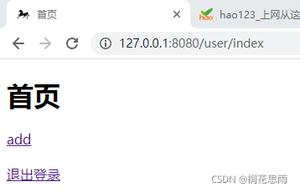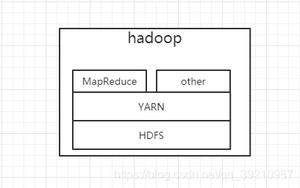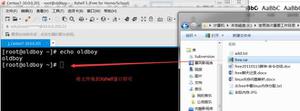[Python]小甲鱼Python视频第034课(withelse)课后题及参考解答

# -*- coding: utf-8 -*-"""
Created on Sun Feb 24 13:36:33 2019
@author: fengs
"""
"""
0. 在 Python 中,else 语句能跟哪些语句进行搭配?
if
while
with
except
"""
"""
1. 请问以下例子中,循环中的 break 语句会跳过 else 语句吗?
def showMaxFactor(num):
count = num // 2
while count > 1:
if num % count == 0:
print('%d最大的约数是%d' % (num, count))
break
count -= 1
else:
print('%d是素数!' % num)
num = int(input('请输入一个数:'))
showMaxFactor(num)
会跳过
"""
"""
2. 请目测以下代码会打印什么内容?
try:
print('ABC')
except:
print('DEF')
else:
print('GHI')
finally:
print('JKL')
ABC
GHI
JKL
"""
"""
3. 使用什么语句可以使你不比再担心文件打开后却忘了关闭的尴尬?
with open as f:
....
#f.close(); #不要写,with调用完成时会清理当前对象
"""
"""
4. 使用 with 语句固然方便,但如果出现异常的话,文件还会自动正常关闭吗?
可以,无论如何都会清理当前对象,文件还是会自动关闭
"""
"""
5. 你可以换一种形式写出下边的伪代码吗?
with A() as a:
with B() as b:
suite
方法1:
a = A()
if 'a' in locals():
b = B()
if 'b' in locals():
suite
方法2:with 语句处理多个项目的时候,可以用逗号隔开写成一条语句
with A() as , B() as b:
suite
"""
"""
动动手:
0. 使用 with 语句改写以下代码,让 Python 去关心文件的打开与关闭吧。
def file_compare(file1, file2):
f1 = open(file1)
f2 = open(file2)
count = 0 # 统计行数
differ = [] # 统计不一样的数量
for line1 in f1:
line2 = f2.readline()
count += 1
if line1 != line2:
differ.append(count)
f1.close()
f2.close()
return differ
file1 = input('请输入需要比较的头一个文件名:')
file2 = input('请输入需要比较的另一个文件名:')
differ = file_compare(file1, file2)
if len(differ) == 0:
print('两个文件完全一样!')
else:
print('两个文件共有【%d】处不同:' % len(differ))
for each in differ:
print('第 %d 行不一样' % each)
"""
"""
def file_compare(file1, file2):
count = 0 # 统计行数
differ = [] # 统计不一样的数量
with open(file1) as f1, open(file2) as f2:
for line1 in f1:
line2 = f2.readline()
count += 1
if line1 != line2:
differ.append(count)
return differ
file1 = input('请输入需要比较的头一个文件名:')
file2 = input('请输入需要比较的另一个文件名:')
differ = file_compare(file1, file2)
if len(differ) == 0:
print('两个文件完全一样!')
else:
print('两个文件共有【%d】处不同:' % len(differ))
for each in differ:
print('第 %d 行不一样' % each)
"""
"""
1. 你可以利用异常的原理,修改下面的代码使得更高效率的实现吗?
print('|--- 欢迎进入通讯录程序 ---|')
print('|--- 1:查询联系人资料 ---|')
print('|--- 2:插入新的联系人 ---|')
print('|--- 3:删除已有联系人 ---|')
print('|--- 4:退出通讯录程序 ---|')
contacts = dict()
while 1:
instr = int(input('\n请输入相关的指令代码:'))
if instr == 1:
name = input('请输入联系人姓名:')
if name in contacts:
print(name + ' : ' + contacts[name])
else:
print('您输入的姓名不再通讯录中!')
if instr == 2:
name = input('请输入联系人姓名:')
if name in contacts:
print('您输入的姓名在通讯录中已存在 -->> ', end='')
print(name + ' : ' + contacts[name])
if input('是否修改用户资料(YES/NO):') == 'YES':
contacts[name] = input('请输入用户联系电话:')
else:
contacts[name] = input('请输入用户联系电话:')
if instr == 3:
name = input('请输入联系人姓名:')
if name in contacts:
del(contacts[name]) # 也可以使用dict.pop()
else:
print('您输入的联系人不存在。')
if instr == 4:
break
print('|--- 感谢使用通讯录程序 ---|')
"""
print('|--- 欢迎进入通讯录程序 ---|')
print('|--- 1:查询联系人资料 ---|')
print('|--- 2:插入新的联系人 ---|')
print('|--- 3:删除已有联系人 ---|')
print('|--- 4:退出通讯录程序 ---|')
contacts = dict()
while True:
instr = int(input('\n请输入相关的指令代码:'))
if instr == 1:
name = input('请输入联系人姓名:')
#if name in contacts:
try:
print(name + ' : ' + contacts[name])
except(KeyError):
#else:
print('您输入的姓名不再通讯录中!')
if instr == 2:
name = input('请输入联系人姓名:')
#if name in contacts:
try:
print('您输入的姓名在通讯录中已存在 -->> ', end='')
print(name + ' : ' + contacts[name])
if input('是否修改用户资料(YES/NO):') == 'YES':
contacts[name] = input('请输入用户联系电话:')
except(KeyError):
#else:
contacts[name] = input('请输入用户联系电话:')
if instr == 3:
name = input('请输入联系人姓名:')
#if name in contacts:
try:
del(contacts[name]) # 也可以使用dict.pop()
#else:
except(KeyError):
print('您输入的联系人不存在。')
if instr == 4:
break
print('|--- 感谢使用通讯录程序 ---|')
以上是 [Python]小甲鱼Python视频第034课(withelse)课后题及参考解答 的全部内容, 来源链接: utcz.com/z/509385.html






